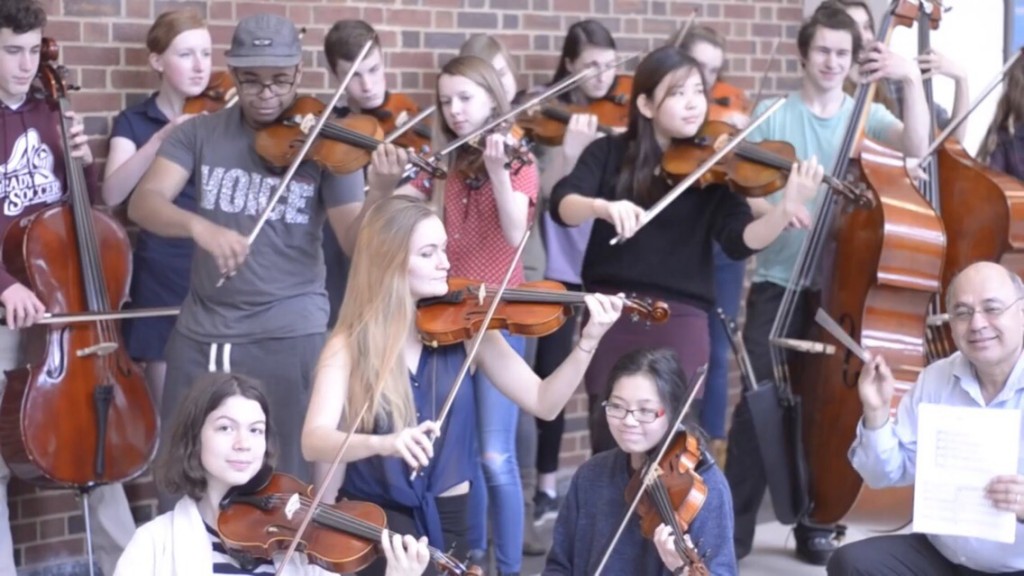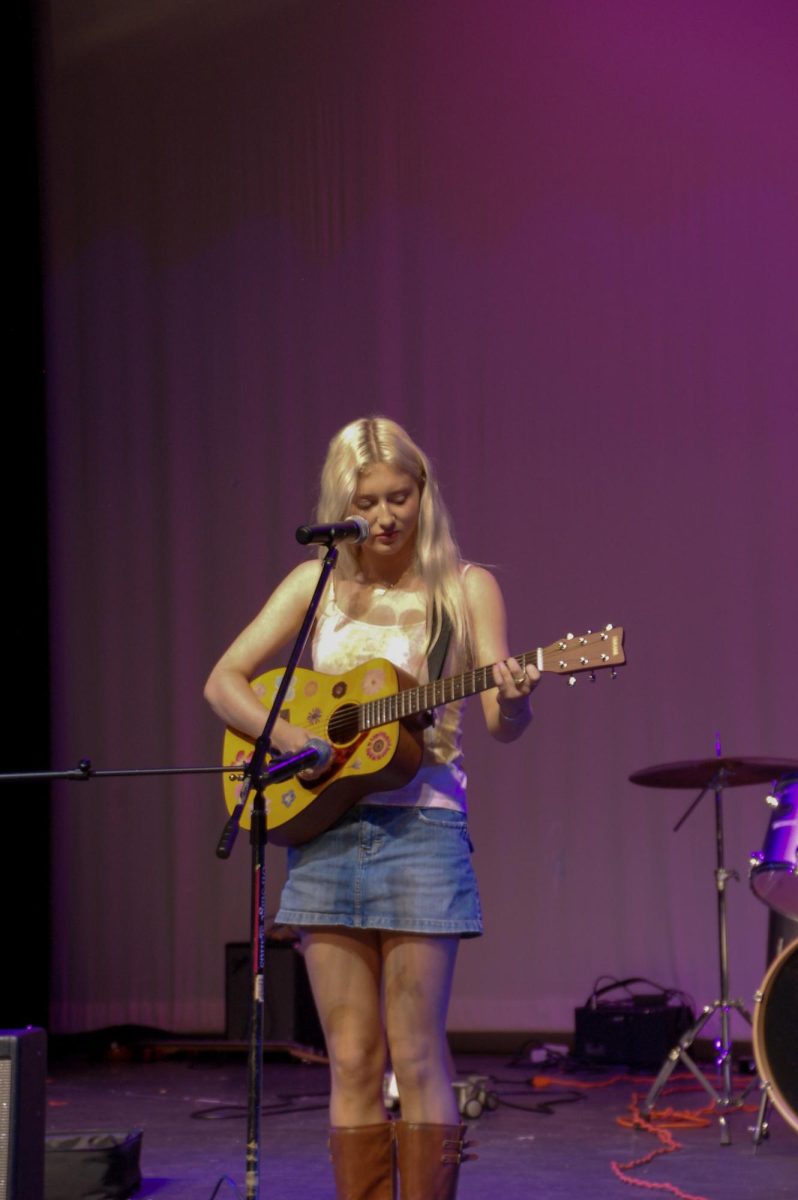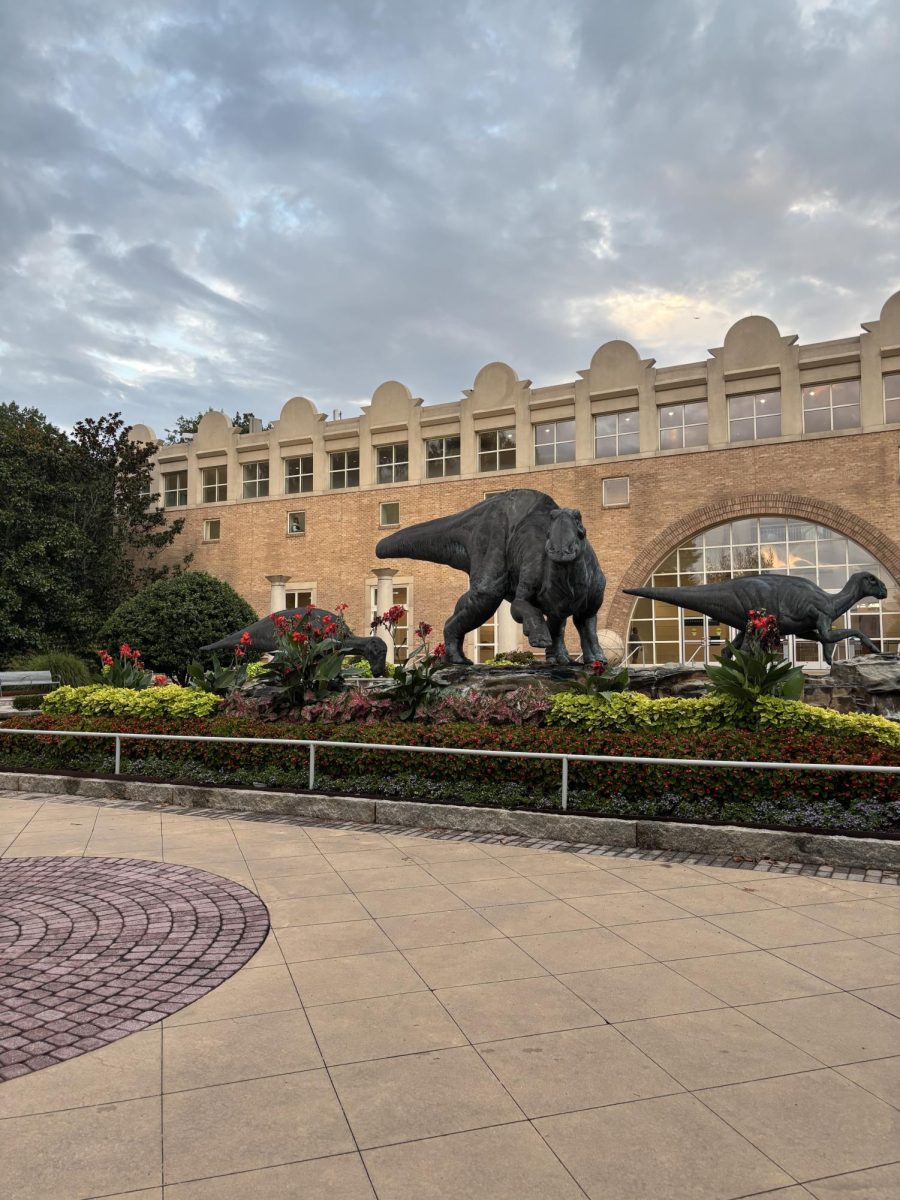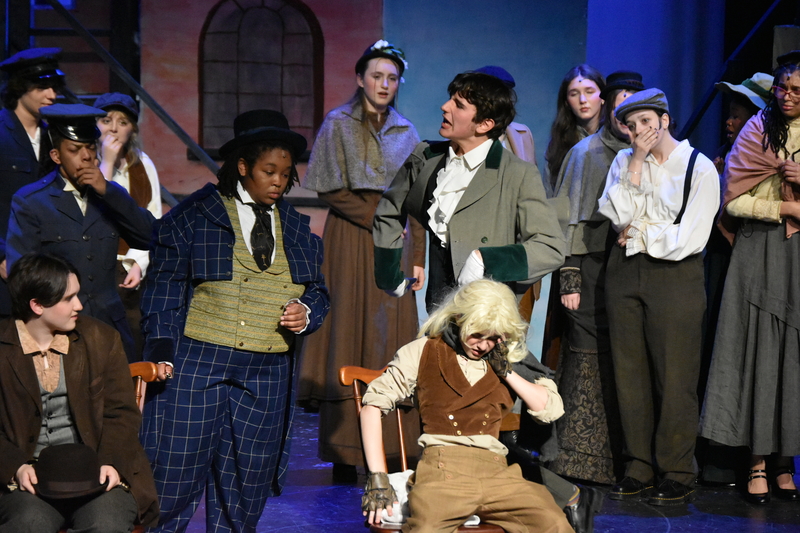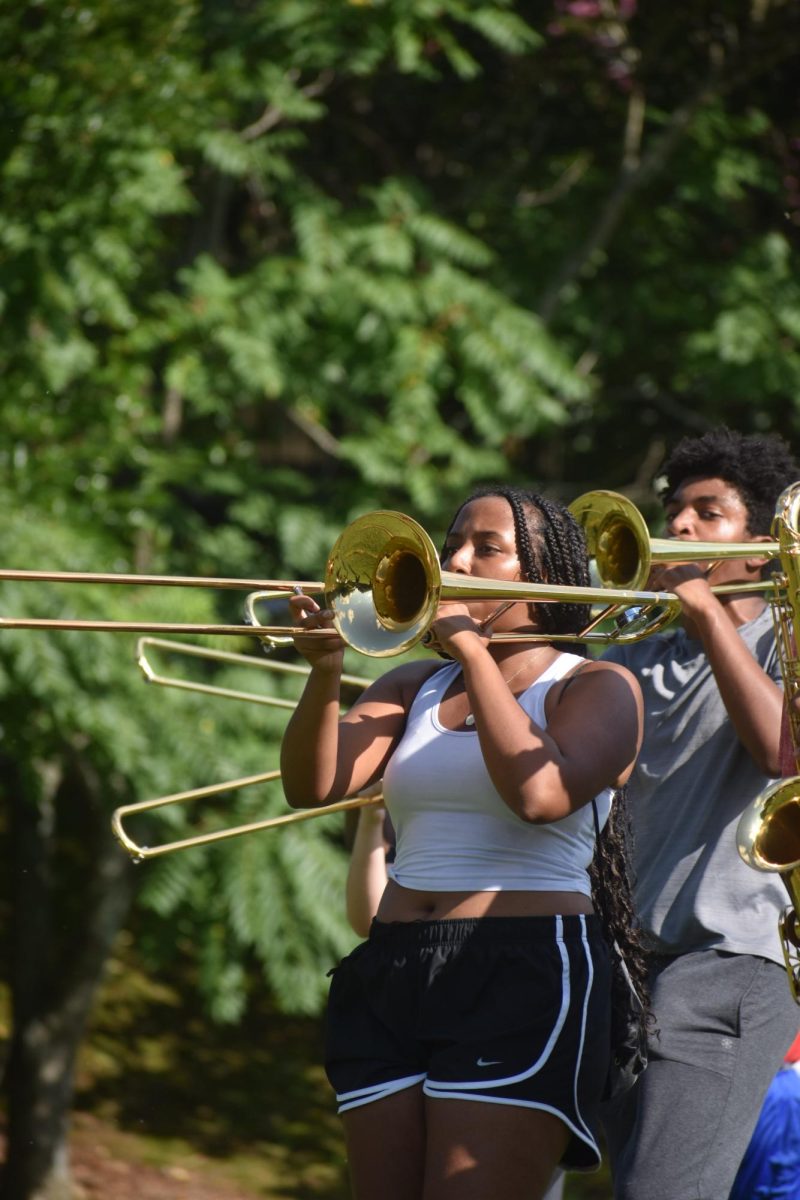
It isn’t every day that the orchestra performs in the paint-ridden scene shop, but when the prospect of a performance with indie violinist Kishi Bashi lay within reach, passersby might have heard orchestral music instead of the usual hum of power tools emanating from the unconventional space.
Last fall, senior violist Uzuki Kakinuma published an interview with Kishi Bashi in Nexus, Grady’s culture magazine. Within weeks, the musician had created a national contest to see which high school orchestras could best perform covers of his music. The winning orchestra would receive $5,000 in strings accessories and the opportunity to play with the him in its spring concert.
The Grady orchestra’s covers of his pieces “Manchester” and “The Ballad of Mr. Steak” earned the group a spot in the top four entries. In a surprising twist, Kishi Bashi ultimately decided not to pick one unique winner, choosing instead to give all four school $1,500 and play in each concert. He performed alongside Grady’s orchestra on April 26.
Although Grady has to share its monetary prize with three other schools, Kakinuma said that what matters most to her is the opportunity to play with Kishi Bashi.
“Even in the beginning, when the first prize was $5,000, I didn’t find it as appealing as a lot of people would,” Kakinuma said. “As we started working on the project, I realized how the money wasn’t my target because of how much fun I was having… The money and [Kishi Bashi] coming in was definitely something I wanted to leave behind, but the rest of it was just a matter of memories.”
Orchestra members began spitballing ideas for their Manchester music video in December. Unlike many of the other schools’ submissions, which were comprised of a single-shot performance, Grady’s video for “Manchester” featured the orchestra performing alongside singers. Choir members Max Caulderon, Kendall Stroud and Diamond Smith alternated vocals for the recording of “Manchester.” After recording the vocals and accompaniment separately, sophomore Sejin Kim shot the video.
“Normally I would record shot by shot but for this, I ended up with eight, nine-minute clips that in the end would have to be edited together,” Kim said. “It was a challenge to edit because a good 80 percent of the footage was not usable.”
This approach led Grady’s video to have a distinct personality.
“A video of someone performing is very candid, but you catch that person in one phase where they’re just focused on the music,” Kakinuma said. “When you have people being free outside of the classroom, that can trigger so many different emotions. When you start to realize different atmospheres and different aesthetics for how you want to perform, your faces and your emotions and your movement all start to change as well.”
Scenes shot in the light, airy theater atrium contrast those in the more visually stimulating scene shop.
“We went to the scene shop, and Max sat inside a bauble [hanging from the ceiling],” orchestra conductor Sergio Rodriguez said. “There was all this stuff there, all these colors, and that was a reflection of the [students’] open minds and of the diversity in every way. The music portrays the melting pot that we have in America.”
Kakinuma said that Grady’s diversity made the project all the more meaningful.
“I cannot stress enough how when different kinds of people come together, that is more beautiful than when similar types of people come together to make songs,” Kakinuma said. “Nothing is more boring than a bunch of people sitting down and looking at one sheet of music and playing.”
Grady’s edited video stood in contrast to other schools’ more candid submissions, most of which were single-shot recordings of performances.
“The other schools played really well; they had big effects and lighting — cosmetic stuff — but they played like robots,” Rodriguez said. “That’s what I hate the most. We are not zombies here. Music has to have movement, without movement there is no music.”
Kakinuma said that the project strengthened the bond between her and her fellow musicians, and that it helped her peers “find their love of music again.”
“You can see friendship, love in the orchestra,” Rodriguez said. “These kids love each other. I love these kids. That love and this free spirit shows in the video. [As you watch it,] you feel in yourself an uplifting something. I feel proud, it’s amazing. You feel like this life is beautiful, and we can be happy.”
Grady’s performances and subsequent win led Kakinuma and vocalist Diamond Smith to appear on Georgia Public Broadcasting on March 16.
“One of the great things about this contest is that it’s receiving news coverage around Atlanta, Indiana, Illinois and Florida, where the other winners were,” Kim said. “That’s forced schools to really take a closer look at what they’re doing to their music programs.”
In her interview with the radio station, Smith said the contest helped her to believe she could pursue music professionally.
“I do believe that [this project] gave me the confidence that I could do it,” Smith said. “I’ve always wanted to do music, but through this project — how much fun I had with it, and how many things I’ve learned doing it — [I realized] this could be a real thing for me.”
Kakinuma and Kim said that the orchestra hopes to create more music videos in the future.

